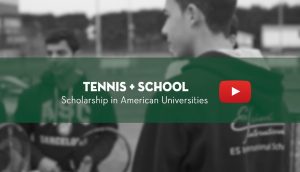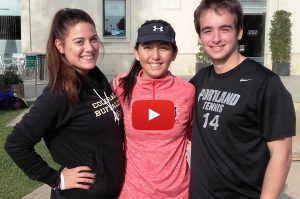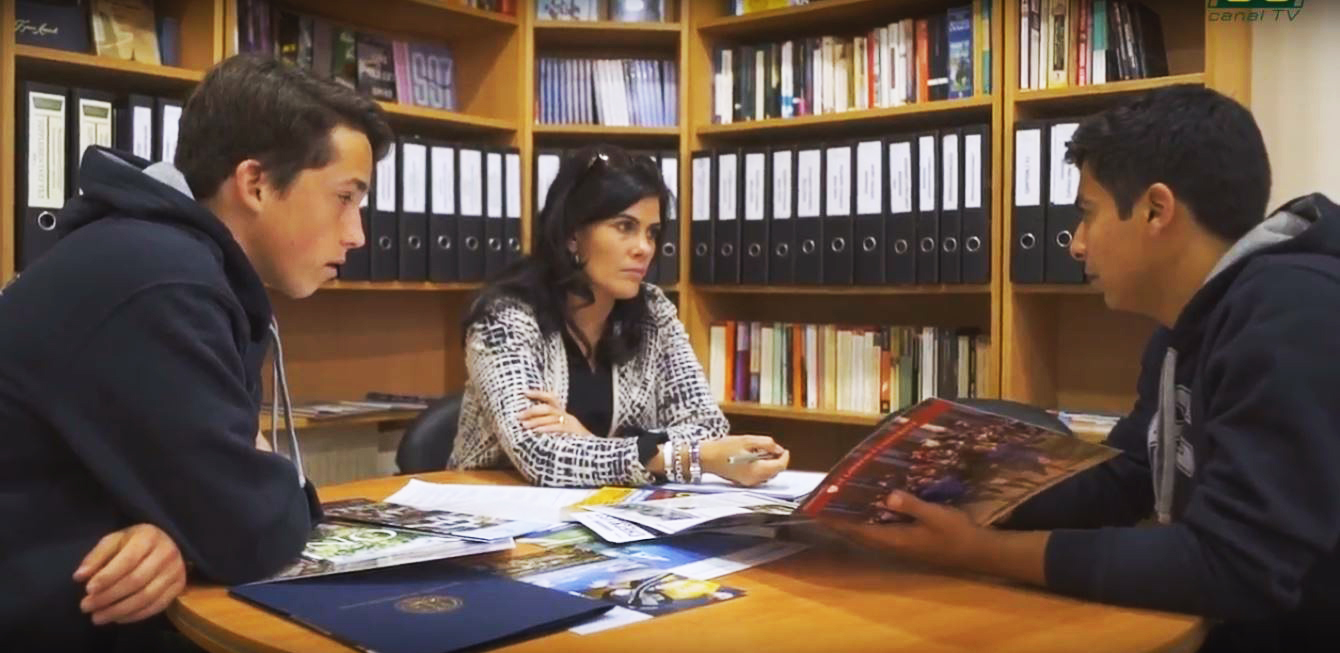
By Jennifer Ferrara, Guidance Counselor ES International School, Barcelona.
If I had to choose a metaphor for the university placement process, it would be a puzzle. Over the course of high school and a junior tennis career, many pieces fit together finally resulting in a complete picture. If one were to follow the commonly used strategy of putting a puzzle together, corner pieces would be the anchors that frame it. In the university placement puzzle, these pieces are: 1. Academics, 2. Tennis, 3. Character and 4. Family budget.
Beginning in 8th grade, we in ASC and ES International School emphasize the idea that study skills and diligence in school are crucial aspects to opening university doors. With the onset of 9th grade, GPA and results in classes already count for university. Therefore, the transition to high school is an important one in which students need to be cognizant of the impact that their grades and study habits will ultimately have on the choices available to them. Given that standardized tests are also a piece of the academic puzzle, we begin with an initial introduction to the SAT by administering the PSAT 8/9. This allows students to become familiar with the standardized test early in their high school careers, thus minimizing the anxiety and maximizing their preparation. On the tennis side, players are honing skills and playing tournaments in order to achieve results and gain valuable experience.
Character development is part of the daily experience of our student-athletes – on the court and in the classrooms. Additionally, we dedicate time and planning to character through our advisory program. As academics become more challenging and tournament schedules become more intense, there is a focus in our advisory program to guide students and empower them to successfully strike this balance with integrity and character.
As students move into 10th grade, we continue to emphasize the component pieces that determine university opportunities. If we were to extend the metaphor, each individual course and each tournament becomes an additional piece of the puzzle. In 10th grade, we administer the PSAT 10. With the puzzle beginning to have some clear shapes and images, the end of 10th grade is an important moment for the Guidance Counselor to connect with students and evaluate what needs to happen over the summer and in the upcoming year.
In the fall of 11th grade, pieces of the puzzle continue to fall into place. We offer SAT preparation classes in both the fall and spring semesters. The goal is that the standardized testing is complete by the spring of 11th grade. Our advisory program continues to play an integral role and students begin meeting regularly with the Guidance Counselor. Students continue to train rigorously and compete in tournaments providing more information about what types of universities are best suited to them athletically.
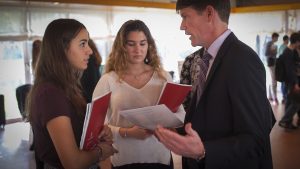
Early in 11th grade, students are encouraged to sign up with our tennis agent. There are several key questions at this stage that begin to fill in the puzzle even further: What type of experience is the student looking for? What size university? What type of tennis program? Are they looking for a university that considers itself a professional training ground? Do they want to play on a team with less pressure and intensity? Do they want a smaller more intimate university or a university that is the size of a small city? What type of location do they prefer? What is the student interested in studying? Please note, it is perfectly normal that students at this stage are not certain of what they want to study. The US university system is flexible and students have plenty of time to explore and learn what options exist once they are in university. However, for those students who are certain, it becomes a fully defined piece of the puzzle.
Another critical component is the financial puzzle piece. Understanding the family’s financial expectations is critical, given that there are a variety of academic and athletic scholarships, and not all universities have the same policies or amounts of scholarships available. With all these puzzle pieces, a personalized and targeted list of universities is developed for each student-athlete.
This is where the student-athlete’s university placement experience departs from the traditional university placement process. Because student-athletes are both students and athletes, their journey in the placement process necessarily involves both academics and athletics. University coaches play a significant role in the process. University coaches are looking for players whom they believe will be a good fit for their team. Obviously, they are considering tennis level and results, but they are also considering the person. Why? University tennis is a team sport and while the team wins through a series of individual wins, ultimately, the feeling is that of a collective team effort. Coaches want student-athletes that can be a positive force on the team, not just in terms of tennis, but in terms of attitude and sportsmanship. Therefore, the most effective way for coaches to get to know student-athletes is through direct communication. Students are carefully guided and taught how to become their own best advocates and work on building relationships with coaches over the course of the university placement process. One of the most exciting aspects of university placement is witnessing the growth that takes place in each student as a result of this process.
The ongoing communication with coaches can last anywhere between 1 – 20 months. Students do copious amounts of guided research in this phase and begin to decide which universities they are most interested in and which they hope to target. In this process, they may also discover additional universities that interest them. During this period, some universities on the list will be eliminated – either by the student-athlete or because the coach is unable to offer a spot or a scholarship that meets the criteria set forth by the student-athlete and his/her family.
Flexibility and adaptability are key concepts in this phase. Student-athletes are, generally speaking, already resilient and this serves them well during this period of “wins and losses.” The Guidance Counselor, in addition to guiding students on the practical nuts and bolts of written communication, interview skills, research, application requirements, registration on Common App and other platforms, essay-writing, SAT planning, etc. provides support and asks key questions to help students make decisions for themselves. Student ownership of the process is vital and makes for a positive and ultimately successful university placement process.
The summer before 12th grade, we take our student-athletes to the US for a university showcase combined with visits to US universities and additional ITA tournaments. This allows students to meet coaches and see universities. By the beginning of 12th grade, many student-athletes have their list of universities narrowed down to 6 or 7 universities. It is important to note that each individual student-athlete goes through the university placement process at his/her own rate and with his/her own particular hurdles and triumphs. Our process is highly individualized and follows the necessary course for each student-athlete. Some student-athletes will have placements settled by the first NLI (National Letter of Intent) signing period in mid-November of 12th grade. Other students are still fitting the final pieces of the puzzle together and the completed picture emerges during the spring NLI signing period beginning in mid-April and going through the summer months.
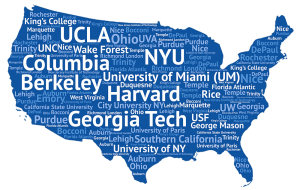
The parent role throughout the university placement process is also fundamental. It can be a stressful moment for families. Not only is the process new to many families, they are also concretely facing the reality of sending their child far away into a system that is unfamiliar. Asking open-ended questions, learning about the universities on your student-athlete’s list, coming in for meetings with the Guidance Counselor are all strongly encouraged. The most important thing to keep in mind is that the puzzle pieces do fall into place and that there is a great university fit for everyone who undertakes this journey. Sometimes completing the puzzle involves shifting expectations or considering options that are new or unknown. Flexibility and adaptability are key concepts for parents as well as student-athletes.
Being supportive of your student-athlete as they navigate the in-between world of childhood and adulthood is imperative. They began this journey the first time they picked up a racket. They have come a long way to make all the puzzle pieces and fit them together. You, as parents, have been there through all of it. The reward of seeing a completed puzzle with your student-athlete having driven the process, even when it seemed that some pieces were missing or that the puzzle would never be completed, is a beautiful moment of success for the student-athlete and for you, the parents who supported their journey.
Jennifer Ferrara
Guidance Counselor at ES International School, Barcelona
